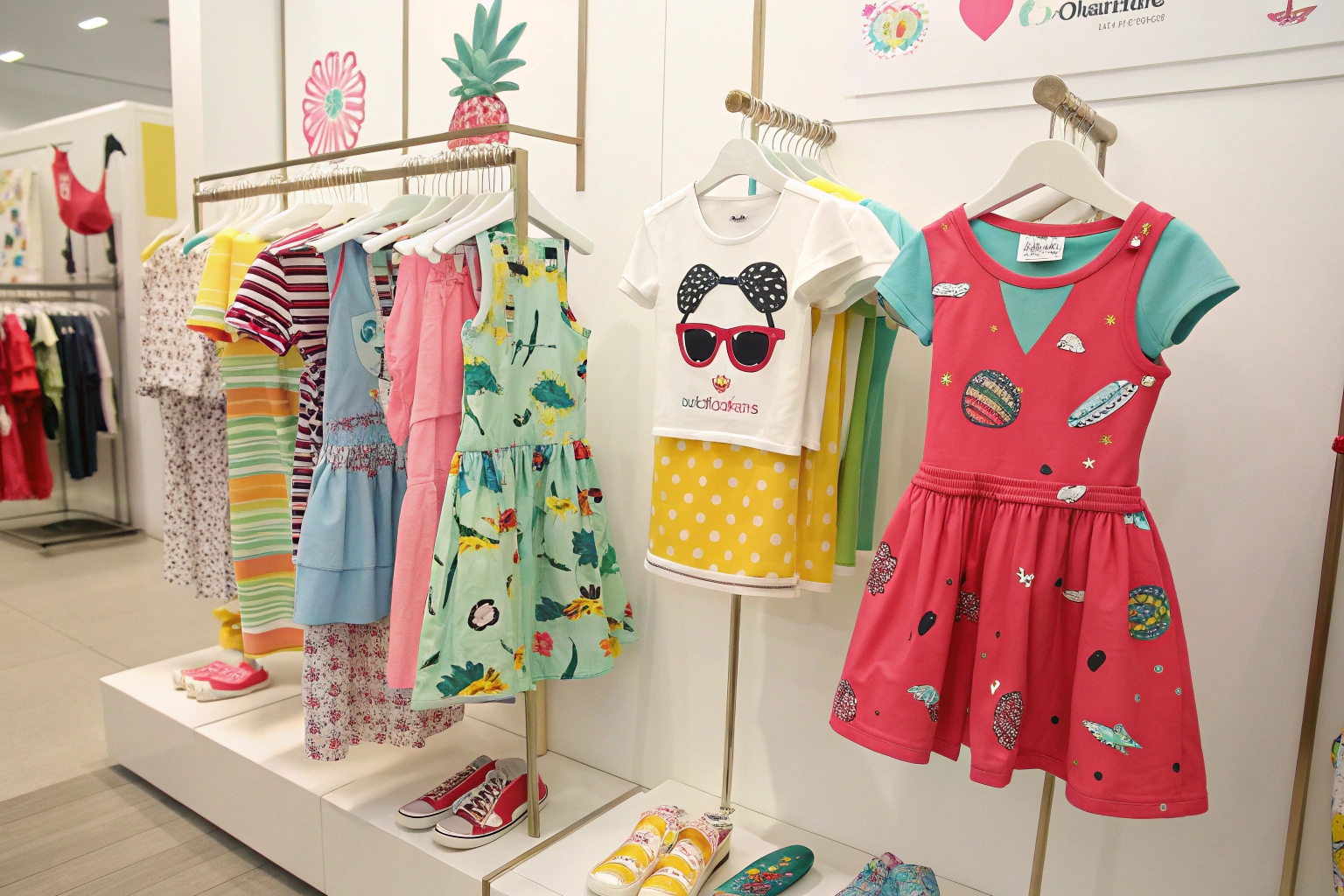Sometimes I walk through kids’ clothing aisles and think—wow, why don’t they make this in my size?
Kids’ clothing often looks nicer because it’s more playful, trend-forward, and designed with fewer constraints than adult fashion.
Let’s dig into what’s behind this difference, and what it means for brands, parents, and buyers like me.
Why are kids clothes so much cheaper?
It feels like magic—buying a full set for kids costs less than one adult hoodie.
Kids’ clothes are cheaper because they use less fabric, have simpler construction, and operate in a volume-based pricing model.
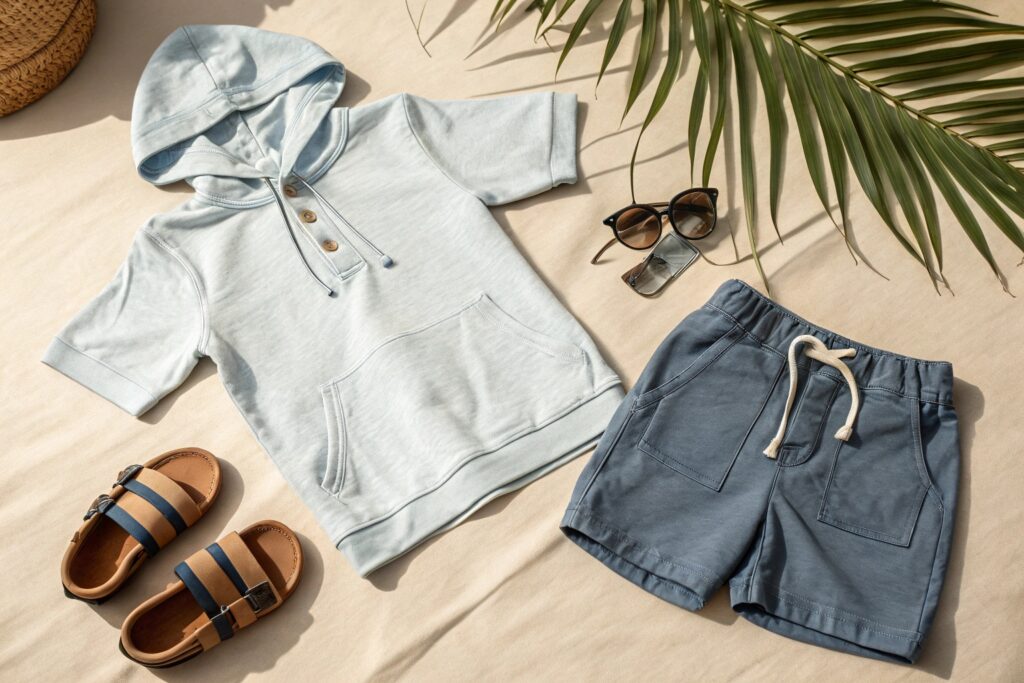
How do production costs make kids’ clothes more affordable?
In manufacturing, cost is all about quantity, materials, and process time. Kids’ clothes use:
- Less fabric
- Smaller trims
- Shorter stitching time
- Simpler designs with fewer components
From my production line, I know that a child’s shirt may take only 60% of the time and fabric required for an adult’s. Multiply this by thousands of pieces, and you get serious savings.
Also, many brands operate kids’ fashion on a high-turnover model. They expect parents to buy often—so they price low to encourage repeat purchases.
Here’s a rough breakdown:
| Category | Kids' Shirt | Adult Shirt |
|---|---|---|
| Fabric Usage | 0.5–0.7 meters | 1.2–1.5 meters |
| Labor Time | ~10 minutes | ~20–30 minutes |
| Price to Customer | $5–15 | $20–50 |
Do quality and pricing always match?
Not really. Some kids’ clothes are cheap and flimsy—but not all. I always advise buyers to check for double stitching, soft trims, and dye safety. Low price doesn't always mean low quality, especially in DTC brands or trusted manufacturers like ours.
Why are kids' clothes so colorful?
It’s hard to miss—rows of bright pink, bold blues, neon prints everywhere.
Kids' clothes are more colorful because they’re designed to attract attention, reflect youthful energy, and help kids express themselves visually.
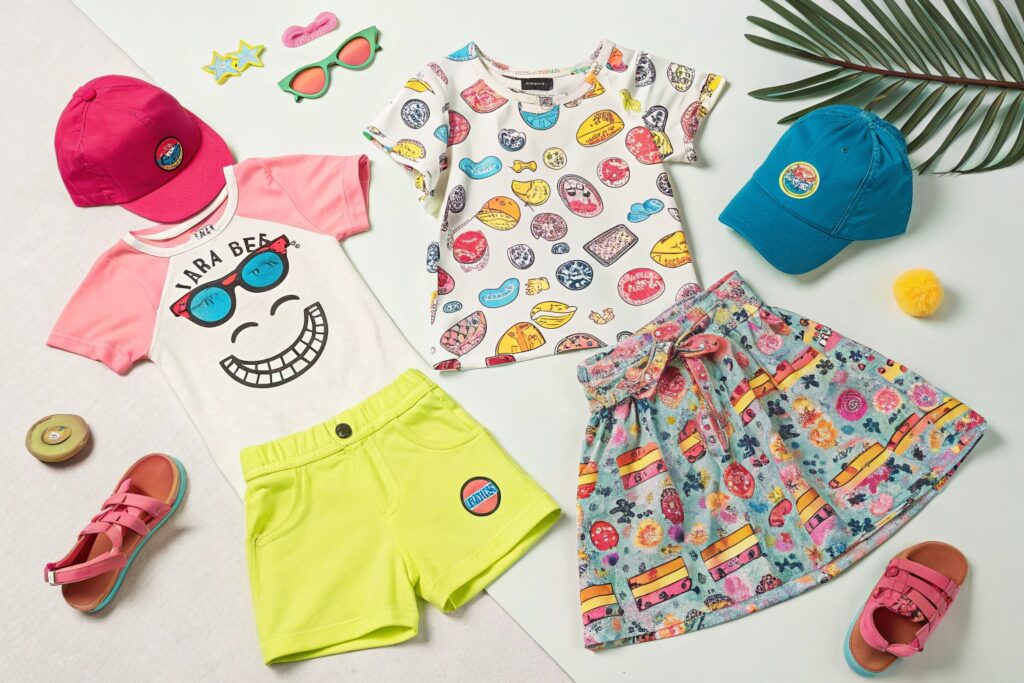
Why does color matter so much in children’s fashion?
Colors trigger emotion. For kids, they also help:
- Develop sensory awareness
- Express personal identity
- Boost confidence
- Inspire playfulness
When I work with children’s brands, color charts are the first thing we finalize. A bright yellow can define a whole season. That doesn’t happen in adultwear, where we chase “timeless,” “minimal,” or “neutral” trends.
Here’s what colors typically signal in kidswear:
| Color | Common Meaning | Usage Examples |
|---|---|---|
| Red | Energy, courage | Graphic tees, outerwear |
| Blue | Calm, trust, curiosity | Everyday basics, uniforms |
| Yellow | Joy, attention | Spring sets, playful dresses |
| Pink | Warmth, love, softness | Girls’ skirts, party wear |
| Green | Nature, freshness, growth | Unisex styles, eco collections |
Do parents actually prefer colorful options?
Yes—and no. Some parents love colorful pieces for photos or events, but prefer muted tones for everyday wear. That’s why I often guide brands to split collections: one half with pop colors, the other with neutrals for layering.
Bright doesn’t always mean loud. Smart color blocking and subtle prints can create cheerful yet tasteful looks.
How many clothes should a 12 year old have?
It’s easy to overbuy. But what’s the right amount?
A 12-year-old should have around 7–10 everyday outfits, plus seasonal and activity-specific items, depending on their lifestyle.
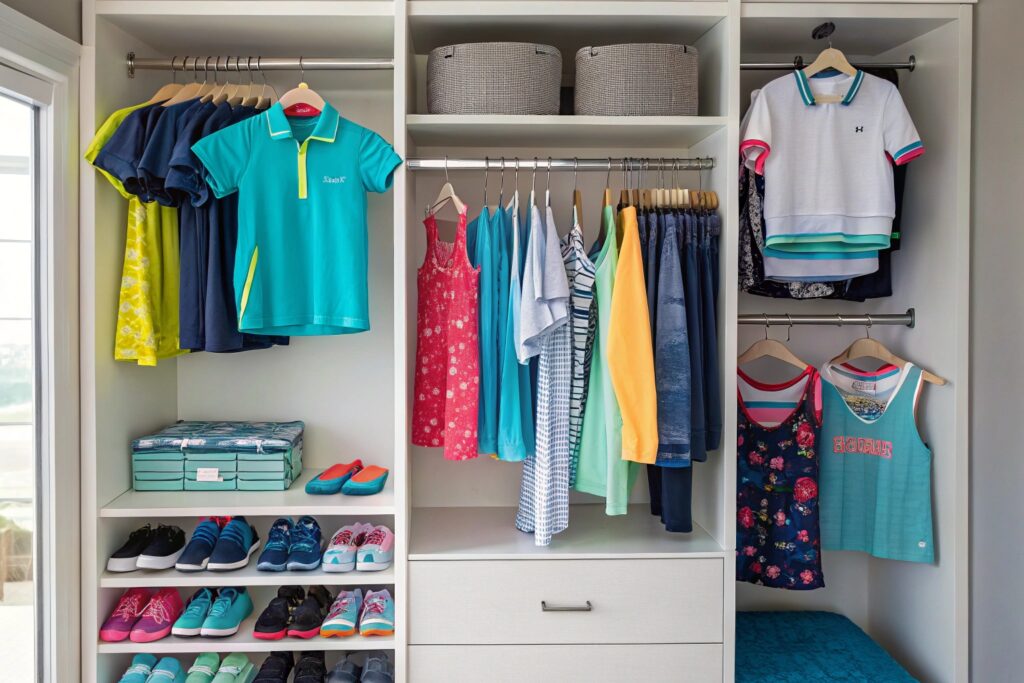
What’s the practical number of clothes for a preteen?
At this age, kids grow slower than toddlers—but they still have changing preferences, school activities, and social awareness.
I usually suggest this baseline wardrobe:
| Type | Quantity | Notes |
|---|---|---|
| T-Shirts | 6–8 | Some long sleeve for layering |
| Pants/Shorts | 5–7 | Include denim and elastic waist |
| Hoodies/Sweaters | 3–4 | Season-dependent |
| Outerwear | 1–2 | Raincoat + cold-weather jacket |
| Sleepwear | 2–3 sets | Breathable materials recommended |
| Underwear/Socks | 10+ each | Always rotate, quick to outgrow |
| Sportswear | 2–3 sets | School gym or weekend activities |
What other factors should influence this number?
A lot depends on laundry frequency, climate, and school rules. Kids in uniform need fewer everyday outfits. Meanwhile, kids involved in outdoor clubs or weekend events may need extra changes.
From my buyer clients, I’ve seen that capsule wardrobes work best—mix-and-match basics with a few standout pieces.
Should parents choose their children's clothes?
It seems like a small question, but it matters more than we think.
Parents should guide clothing choices but allow children to express themselves through age-appropriate decisions.
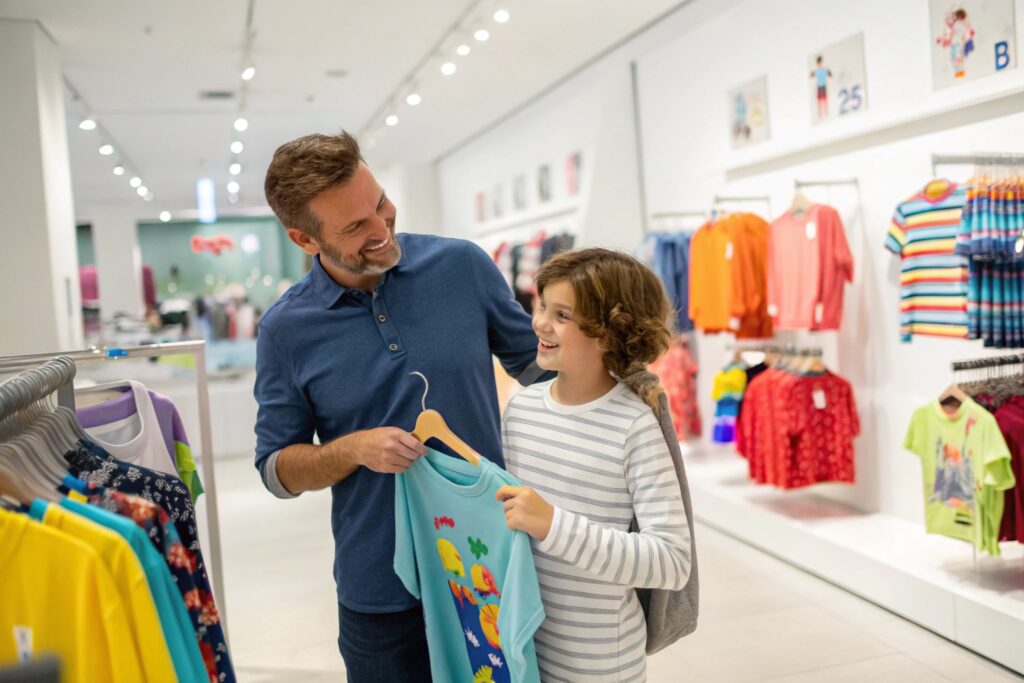
Why is clothing choice part of child development?
What a child wears is tied to identity, independence, and social interaction. By letting kids choose (within reason), parents help them:
- Build decision-making confidence
- Understand social norms
- Discover personal preferences
- Communicate non-verbally
But of course, the age matters. I suggest a shared decision model:
| Age Group | Who Should Choose | Approach |
|---|---|---|
| 2–5 | Mostly parent | Let child pick from 2–3 options |
| 6–9 | Shared input | Parent offers choices, child selects |
| 10–13 | Mostly child | Parent sets guidelines (budget, fit) |
How do I support this as a brand?
When developing collections, I recommend dual-targeting messaging. For parents, focus on safety, durability, and washability. For kids, highlight fun themes, glow-in-the-dark prints, or mix-and-match options.
I’ve seen product photos where just the presence of a dinosaur or unicorn graphic increased click-through rates by 200%—even if the fabric was the same.
Design isn’t just about color or shape. It’s about balance between autonomy and practicality.
Conclusion
Kids' clothing wins on fun, price, and personality—because it's designed with fewer rules and more imagination. And honestly? Maybe adults could use a little more of that too.

